
Maria Anna Angelika Kauffmann, usually known in English as Angelica Kauffman, was a Swiss Neoclassical painter who had a successful career in London and Rome. Remembered primarily as a history painter, Kauffmann was a skilled portraitist, landscape and decoration painter. She was, along with Mary Moser, one of two female painters among the founding members of the Royal Academy in London in 1768.

George Stubbs was an English painter, best known for his paintings of horses. Self-trained, Stubbs learnt his skills independently from other great artists of the 18th century such as Reynolds and Gainsborough. Stubbs' output includes history paintings, but his greatest skill was in painting animals, perhaps influenced by his love and study of anatomy. His series of paintings on the theme of a lion attacking a horse are early and significant examples of the Romantic movement that emerged in the late 18th century. He enjoyed royal patronage. His painting, Whistlejacket hangs in the National Gallery, London.

Gilbert Stuart was an American painter from Rhode Island Colony who is widely considered one of America's foremost portraitists. His best-known work is an unfinished portrait of George Washington, begun in 1796, which is usually referred to as the Athenaeum portrait. Stuart retained the original and used it to paint scores of copies that were commissioned by patrons in America and abroad. The image of George Washington featured in the painting has appeared on the United States one-dollar bill for more than a century and on various postage stamps of the 19th century and early 20th century.
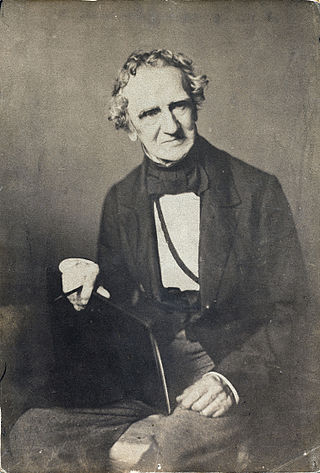
Thomas Sully was an American portrait painter in the United States. Born in Great Britain, he lived most of his life in Philadelphia, Pennsylvania. He painted in the style of Thomas Lawrence. His subjects included national political leaders such as United States presidents: Thomas Jefferson, John Quincy Adams, and Andrew Jackson, Revolutionary War hero General Marquis de Lafayette, and many leading musicians and composers. In addition to portraits of wealthy patrons, he painted landscapes and historical pieces such as the 1819 The Passage of the Delaware. His work was adapted for use on United States coinage.

Nicolaes Maes was a Dutch painter known for his genre scenes, portraits, religious compositions and the occasional still life. A pupil of Rembrandt in Amsterdam, he returned to work in his native city of Dordrecht for 20 years. In the latter part of his career he returned to Amsterdam where he became the leading portrait painter of his time. Maes contributed to the development of genre painting in the Netherlands and was the most prominent portrait painter working in Amsterdam in the final three decades of the 17th century.

Nicolas de Largillière was a French painter and draughtsman.
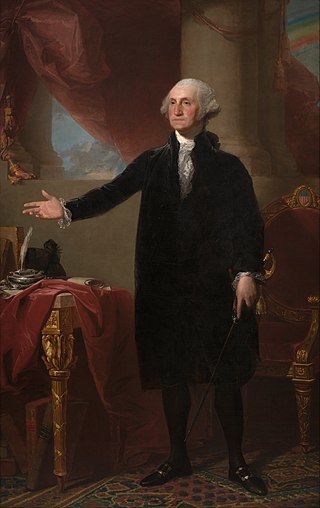
The Lansdowne portrait is an iconic life-size portrait of George Washington painted by Gilbert Stuart in 1796. It depicts the 64-year-old president of the United States during his final year in office. The portrait was a gift to former British Prime Minister William Petty, 1st Marquess of Lansdowne, and spent more than 170 years in England.

Robert Feke was an American portrait painter born in Oyster Bay, New York. According to art historian Richard Saunders, "Feke’s impact on the development of Colonial painting was substantial, and his pictures set a new standard by which the work of the next generation of aspiring Colonial artists was judged." In total, about 60 paintings by Feke survive, twelve of which are signed and dated.

Wyatt Eaton, baptised Charles Wyatt Eaton, was a Canadian-American portrait and figure painter, remembered as one of the founders of the Society of American Artists.
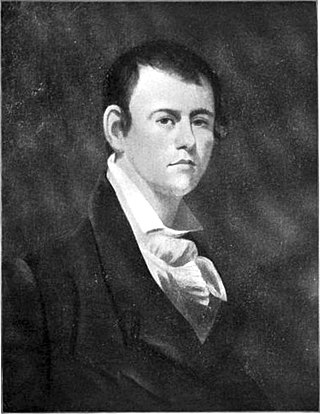
Matthew Harris Jouett was a noted American portrait painter, famous for painting portraits including Thomas Jefferson, George Rogers Clark and Lafayette.

David Jagger (1891–1958) was an acclaimed and prolific English portrait painter. He was renowned for his commissioned portraits of London's high society and British aristocracy. Notable portraits include those of Robert Baden-Powell (1929), Queen Mary, King George VI (1937), Winston Churchill (1939), Vivien Leigh (1941) and Prince Philip, Duke of Edinburgh (1958).

The Skater is a 1782 oil on canvas portrait of Sir William Grant by the American artist Gilbert Stuart. Painted while Stuart was living in London, it was the work that first brought the artist broad recognition.

Matthew Pratt was an American "Colonial Era" artist famous for his portraits of American men and women. He was born in Philadelphia, Province of Pennsylvania to goldsmith Henry Pratt, (1708–1748) and Rebecca Claypoole, (1711–1762), he was the second of eight children born to the Pratts.
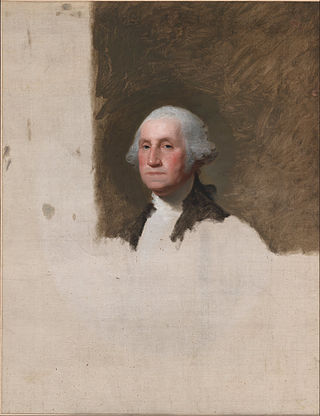
The Athenaeum Portrait, also known as The Athenaeum, is an unfinished painting by Gilbert Stuart of United States President George Washington. Created in 1796, it is Stuart's most notable work. The painting depicts Washington at age 64, about three years before his death, on a brown background. It served as the model for the engraving that would be used for Washington's portrait on the United States one-dollar bill.

A paintings conservator is an individual responsible for protecting cultural heritage in the form of painted works of art. These individuals are most often under the employ of museums, conservation centers, or other cultural institutions. They oversee the physical care of collections, and are trained in chemistry and practical application of techniques for repairing and restoring paintings.

Richard Phelps (1710–1785) was an 18th-century English portrait painter and designer. He painted portraits of gentry, a number of which are in the National Trust, Dunster Castle, University of Oxford, National Portrait Gallery, London, and other museums. The British Museum has an album of 312 of his drawings. Phelps was also a landscape designer, who was hired by Henry Fownes Luttrell to update the grounds of Dunster Castle.

Gilbert Stuart is a painting by Sarah Goodridge. It is in the collection of the Metropolitan Museum of Art.

Benjamin Trott was an American painter who specialized in portrait miniatures.

Rebecca Pritchard Mills and Her Daughter Eliza Shrewsbury is an oil-on-canvas portrait created by American painter James Earl. It was painted in Charleston, South Carolina, in 1794. A bequest of Henry Francis du Pont, the painting is held in the permanent collection of the Winterthur Museum, Garden and Library.
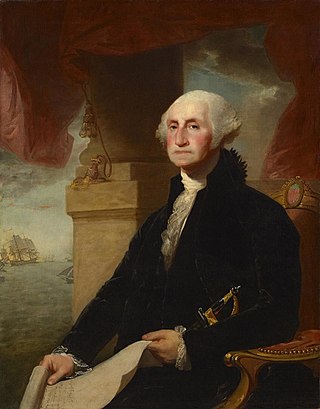
George Washington is an oil on canvas painting by American artist Gilbert Stuart, made in 1797. It is held at the Crystal Bridges Museum of American Art, in Bentonville, Arkansas.




















